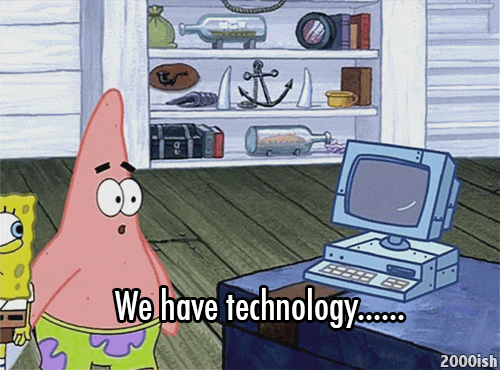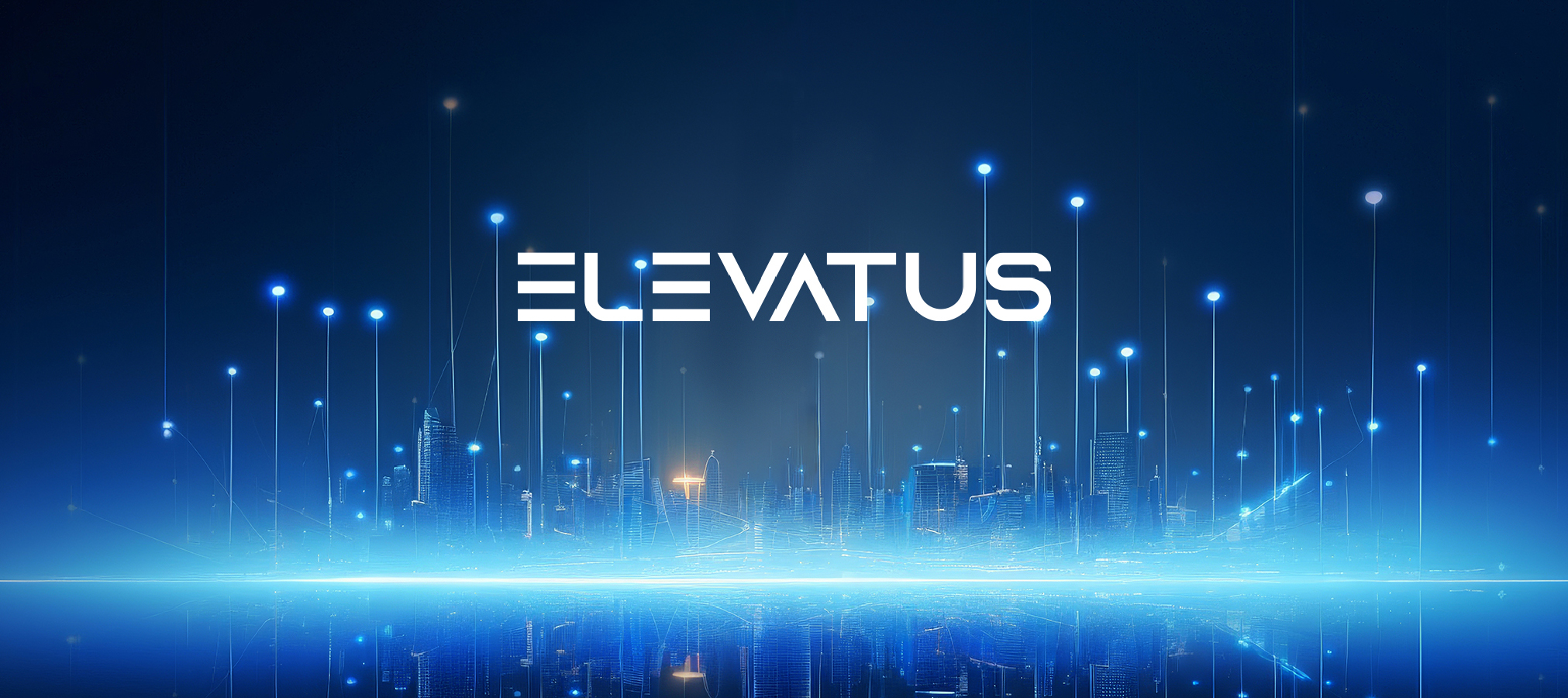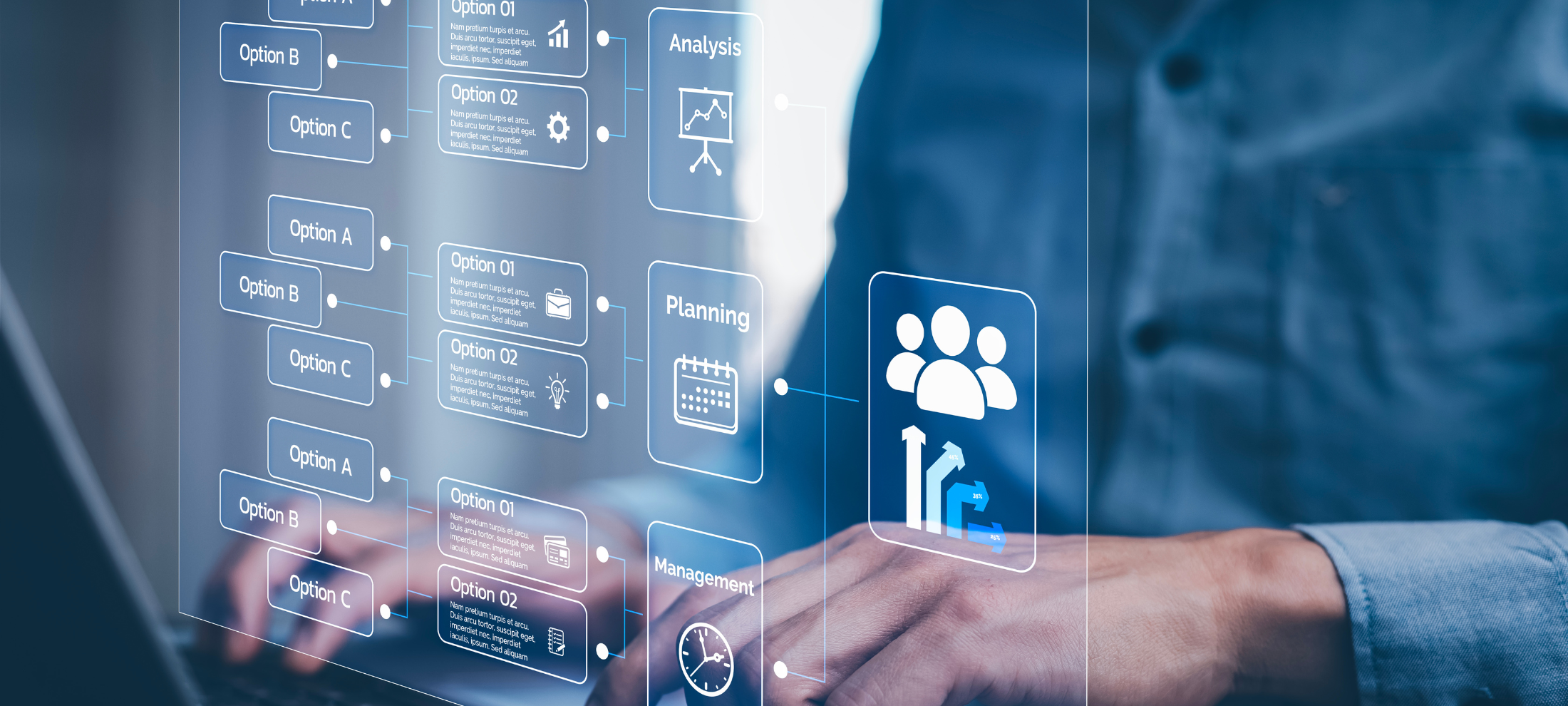
Healthcare Recruiting
Healthcare HR Software: Unveiling Shocking Trends & Future Innovations
April 19, 2024



Kiran Kazim
Content Writer
As a healthcare recruiter, you might be deep in the trenches of healthcare HR, always upgrading to the latest software and receiving positive feedback, yet something doesn’t quite click. Your team works tirelessly, and the demands grow, yet the outcomes aren’t as revolutionary as the promises made.
And it leaves you wondering…
Should you keep waiting for that breakthrough where everything aligns perfectly with your operational needs? Or, is it possible that the healthcare HR software solutions you’re using are just not up to the task, acting more as placeholders than powerhouses?
In the fast-evolving healthcare sector, it’s crucial that your HR software doesn’t just keep up but leads the way. In this blog, we explore the current trends shaping healthcare HR software and the promising future directions that can redefine how you manage your workforce, improving care delivery by enhancing employee management.
Recruit high-caliber healthcare teams
Advance your healthcare services, enhance patient care, and increase your revenue potential on a global scale with Elevatus.
Request a demoTable of Contents
Healthcare HR Journey Through Evolutionary Software Trends


From the early days of basic HR systems to today’s sophisticated solutions, the impact of HR software on healthcare cannot be overstated.
The history of HR software in healthcare dates back to the late 20th century when organizations began using basic HR systems to manage employee data and payroll. These early systems laid the foundation for more advanced solutions that would follow.
One notable example of early HR software in healthcare is the implementation of electronic health records (EHRs). While primarily focused on patient care, EHRs also revolutionized HR processes by digitizing employee records and streamlining administrative tasks.
As technology advanced, so did HR software in healthcare. Today, healthcare organizations have access to sophisticated HR solutions that go beyond basic record-keeping. These include talent management systems, workforce analytics platforms, and employee engagement tools.
For example, pioneering software like EVA-MED offers comprehensive HR solutions tailored specifically for the healthcare industry. EVA-MED is the premier healthcare ATS in the MENA region, empowering medical groups across the globe to efficiently source and onboard high-caliber professionals, including physicians, nurses, paramedics, and healthcare administrators.
EVA-MED stands out not just for its specialization but also for its commitment to building high-quality healthcare teams. It helps improve the standard of healthcare services and enhances patient care, ultimately unlocking significant revenue potential on a global scale. With a track record of partnering with reputable hospitals in the MENA region, such as Al Habib Medical Group, Interhealth, and Al Salama Hospital, EVA-MED is at the forefront of addressing the industry’s staffing needs. By 2029, it aims to help fill 2.4 million healthcare positions, driving sector-wide growth. Want to experience the features firsthand, click here to see now – one of the best HR software for healthcare.
Unveiling the Power of Modern Healthcare HR Software: Meeting Today’s Challenges Head-On


The current state of healthcare HR software is marked by a plethora of advanced capabilities and functionalities designed to address the unique challenges faced by the industry. These solutions have evolved significantly to meet the demands of healthcare-specific challenges, such as staffing shortages and regulatory compliance.
One of the key capabilities of modern healthcare HR software is its ability to streamline the recruitment process. For instance, EVA-MED offers advanced applicant tracking capabilities, allowing healthcare organizations to efficiently manage the influx of job applications and identify qualified healthcare professionals quickly. This is particularly crucial in light of the ongoing staffing shortages in the healthcare industry.
Another important functionality of healthcare HR software is its focus on regulatory compliance. Healthcare organizations must adhere to strict regulations and standards, such as HIPAA and OSHA, to ensure patient safety and confidentiality. Modern HR software solutions are equipped with features that help organizations comply with these regulations, such as automated compliance tracking and reporting.
Furthermore, modern healthcare HR software goes beyond basic HR functions to address broader workforce management challenges.
Emerging Trends in Healthcare HR Solutions
As the healthcare industry continues to evolve, so do the trends and technologies shaping HR solutions within it. Understanding these emerging trends is crucial for healthcare organizations to stay competitive and effectively manage their workforce. Let’s explore some of the key trends and future directions in healthcare HR solutions.
The global Healthcare HR Software market was valued at US$ 6957.4 million in 2023 and is anticipated to reach US$ 17260 million by 2030.
The Power of AI and Machine Learning for Predictive Analytics
The integration of artificial intelligence (AI) and machine learning (ML) in healthcare HR is revolutionizing the way organizations manage their workforce. These technologies enable predictive analytics and automated decision-making, allowing HR departments to make more informed decisions and streamline their processes.
One key application of AI and ML in healthcare HR is in recruitment. AI-powered recruitment platforms can analyze vast amounts of candidate data to identify patterns and predict which candidates are most likely to succeed in specific roles.
AI and ML are also being used to improve employee retention. By analyzing employee data, such as performance reviews and engagement surveys, AI can identify factors that contribute to employee turnover and predict which employees are at risk of leaving. This allows HR departments to intervene proactively and implement retention strategies to retain top talent.
Additionally, AI and ML are being used to automate mundane HR tasks, such as scheduling interviews and processing payroll. This frees up HR professionals to focus on more strategic tasks, such as employee development and engagement.
Rise in the technological advancements and modernization in the healthcare techniques and increase in the demand from emerging economies will further create new opportunities for healthcare HR software market in the forecast period of 2021-2028.
The Impact of Mobile Accessibility in HR Solutions
In the fast-paced world of healthcare, where professionals are constantly on the move, mobile accessibility has become a crucial aspect of HR solutions. The ability to access HR tools and information on the go not only enhances efficiency but also improves employee satisfaction and engagement.
One key area where mobile accessibility is making a significant impact is in recruitment. Mobile-friendly job portals and application processes make it easier for healthcare professionals to search for job opportunities and submit applications, even when they are not at their desks.
Mobile accessibility also plays a vital role in employee communication and engagement. HR solutions that offer mobile apps enable healthcare professionals to access important information, such as policies, benefits, and training materials, from anywhere at any time. This not only keeps employees informed but also makes them feel more connected to their organization.
Furthermore, mobile accessibility is essential for training and development in healthcare. Mobile-friendly learning management systems (LMS) allow healthcare professionals to complete training modules and certifications on their mobile devices, making it easier to stay up to date with the latest developments in their field.
The world’s first AI-powered healthcare ATS
Safeguarding Sensitive Data with Enhanced Security Features
In the healthcare industry, where the protection of sensitive employee and patient data is paramount, HR solutions are adopting enhanced security features to ensure data integrity and confidentiality. These features not only protect against cyber threats but also comply with strict regulatory requirements, such as HIPAA.
One key security feature employed by healthcare HR solutions is encryption. Encryption ensures that sensitive data, such as employee records and patient information, is unreadable to unauthorized users.
Another important security measure is multi-factor authentication (MFA). MFA adds an extra layer of security by requiring users to provide two or more verification factors to access the system. This helps prevent unauthorized access, even if a user’s password is compromised.
Additionally, healthcare HR solutions are implementing advanced access controls to limit who can access sensitive data. Role-based access controls (RBAC) allow organizations to define different levels of access based on an individual’s role within the organization. This ensures that only authorized personnel have access to sensitive data.
Furthermore, HR solutions are investing in regular security audits and assessments to identify and mitigate potential vulnerabilities. These audits help ensure that security measures are up-to-date and effective in protecting sensitive data.
Based on region, the global healthcare human resources software market is bifurcated into North America, Europe, Asia-Pacific, Latin America, and the Middle East and Africa.
Telehealth Workforce Management Capabilities
The rise of telehealth has transformed the way healthcare is delivered, creating new challenges and opportunities for workforce management. HR solutions are adapting to these changes by offering telehealth workforce management capabilities that address the unique needs of remote healthcare professionals.
One key capability of telehealth workforce management is remote scheduling and communication. HR solutions allow healthcare organizations to schedule remote telehealth appointments and communicate with remote staff seamlessly. This ensures that healthcare professionals are deployed efficiently and can provide care to patients from any location.
Another important aspect of telehealth workforce management is training and development. HR solutions are incorporating telehealth-specific training modules and resources to help healthcare professionals adapt to remote care delivery.
Additionally, telehealth workforce management capabilities include performance tracking and analytics. HR solutions can track key performance indicators (KPIs) for remote healthcare professionals, such as patient satisfaction rates and appointment completion times. This data helps organizations optimize their telehealth services and improve patient outcomes.
Furthermore, HR solutions are integrating telehealth-specific compliance features to ensure that remote care delivery meets regulatory requirements. This includes features such as secure video conferencing and data encryption to protect patient privacy.
Harnessing Healthcare Workforce Analytics for Strategic Planning
Workforce analytics has emerged as a powerful tool for strategic planning nowadays. By analyzing data related to their workforce, healthcare organizations can make informed decisions that drive efficiency, improve patient outcomes, and enhance overall organizational performance.
One key application of workforce analytics in healthcare is predicting and managing staffing needs. By analyzing historical data on patient volumes, seasonal trends, and staff productivity, organizations can forecast future staffing requirements more accurately.
Workforce analytics also plays a crucial role in identifying and addressing workforce challenges. By analyzing data on employee turnover, absenteeism, and engagement, organizations can identify trends and patterns that may indicate underlying issues.
Additionally, workforce analytics can help healthcare organizations optimize their workforce composition. By analyzing data on employee skills, certifications, and performance, organizations can ensure that they have the right mix of talent to meet patient needs. For example, Johns Hopkins Hospital used workforce analytics to identify a need for more nurses with specialized training in critical care, leading to targeted recruitment efforts.
Furthermore, workforce analytics can inform strategic decisions related to training and development. By analyzing data on employee skills gaps and training outcomes, organizations can tailor their training programs to meet specific needs.
The Impact of Enhanced Social Recruiting and Branding Tools in Healthcare
Social recruiting and branding tools have become essential for healthcare organizations looking to attract top talent and enhance their employer brand. These tools enable organizations to connect with candidates on a more personal level, showcase their culture and values, and ultimately, attract the best candidates for their teams.
One key benefit of improved social recruiting tools is the ability to reach a larger and more diverse pool of candidates. Platforms like LinkedIn, Facebook, and Twitter allow organizations to promote job openings to a wide audience, including passive candidates who may not be actively looking for a new job. For example, Cleveland Clinic uses LinkedIn to share job postings and engage with potential candidates, resulting in a larger and more diverse applicant pool.
Advanced visa processing for medical talent
Handle all visa requests through a single platform, where you can submit, assess, and decide on visa approvals or rejections in one location.
Request a demoAnother advantage of social recruiting tools is the ability to showcase the employer brand and culture. Platforms like Glassdoor and Indeed allow current and former employees to share their experiences working for an organization, providing potential candidates with valuable insights into the company culture. For example, Mayo Clinic uses Glassdoor to highlight employee reviews and ratings, showcasing its commitment to employee satisfaction and engagement.
Additionally, improved social recruiting tools can streamline the recruitment process and improve efficiency. Furthermore, social recruiting tools can help organizations build a strong employer brand and attract top talent. By engaging with candidates on social media, sharing relevant content, and showcasing their culture and values, and organizations can create a positive image that resonates with potential candidates.
The Transformative Power of Employee Self-Service Portals
Employee self-service portals have revolutionized the way organizations manage their workforce, offering employees the ability to access and manage their own HR-related tasks and information. These portals not only improve efficiency and reduce administrative burden but also empower employees to take control of their own HR needs.
One key benefit of employee self-service portals is the ability to streamline HR processes. Employees can access their pay stubs, update their personal information, and request time off, all without having to involve HR personnel. This not only saves time for both employees and HR staff but also reduces the likelihood of errors that can occur with manual data entry.
Additionally, employee self-service portals can improve employee engagement and satisfaction. By giving employees easy access to their HR information, organizations can empower them to take ownership of their own development and career progression.
Furthermore, employee self-service portals can help organizations improve compliance and reduce risk. By ensuring that employees have access to up-to-date policies and procedures, organizations can reduce the risk of non-compliance.
Moreover, employee self-service portals can enhance communication and collaboration within an organization. By providing employees with a centralized platform to access information and communicate with their peers, organizations can foster a culture of transparency and collaboration.
How Blockchain Revolutionizes Credential Verification in Healthcare
Blockchain technology is revolutionizing the way healthcare organizations verify credentials, offering a secure and transparent way to manage and share sensitive information. By leveraging blockchain for credential verification, organizations can streamline processes, reduce fraud, and ensure the integrity of their workforce.
One key benefit of using blockchain for credential verification is the enhanced security it provides. Unlike traditional methods of credential verification, which rely on centralized databases that are vulnerable to hacking, blockchain offers a decentralized and immutable ledger that is virtually tamper-proof. This ensures that credentials are secure and cannot be falsified.
Additionally, blockchain technology can improve the efficiency of credential verification processes. By providing a single, shared source of truth for credentials, blockchain eliminates the need for manual verification processes, saving time and reducing costs.
Furthermore, blockchain technology can enhance trust and transparency in credential verification. By providing a transparent and auditable record of credential verification, blockchain ensures that all parties involved in the verification process can trust the integrity of the information. For example, The Learning Machine, in partnership with the Federation of State Medical Boards, uses blockchain to verify medical credentials, providing a transparent and secure way for medical professionals to share their credentials with potential employers.


“Blockcerts was built to serve as a foundation for recipient ownership of digital assets – That is the great promise of blockchain technology” – Natalie Smolenski, VP of business development for Learning Machine.
Moreover, blockchain technology can enable new business models and opportunities in credential verification. By providing a secure and transparent way to verify credentials, blockchain opens up new possibilities for credential sharing and verification across borders and industries. For example, BitDegree uses blockchain to verify educational credentials, enabling students to share their achievements with potential employers in a secure and transparent way.
The Power of Predictive Staffing Models in Healthcare
Predictive staffing models are revolutionizing the way healthcare organizations manage their workforce, enabling them to forecast staffing needs with greater accuracy and efficiency. By leveraging historical data, predictive analytics, and machine learning, these models can help organizations optimize their staffing levels, reduce costs, and improve patient care.
One key benefit of predictive staffing models is the ability to anticipate fluctuations in patient demand. By analyzing historical patient data, such as admissions, discharges, and patient acuity levels, organizations can forecast future patient volumes and adjust their staffing levels accordingly. For example, the Cleveland Clinic uses predictive staffing models to adjust nurse staffing levels based on anticipated patient volumes, ensuring that they have the right number of nurses on duty to provide high-quality care.
Additionally, predictive staffing models can help organizations identify and address staffing gaps before they become critical. By analyzing data on employee turnover, absenteeism, and seasonal trends, organizations can identify patterns that may indicate potential staffing shortages and take proactive measures to address them. For example, Kaiser Permanente uses predictive staffing models to identify potential staffing shortages in advance and offer overtime or incentive shifts to fill the gaps.
Furthermore, predictive staffing models can improve workforce efficiency and reduce costs. By accurately forecasting staffing needs, organizations can avoid overstaffing, reduce overtime costs, and optimize resource allocation. For example, Mercy Health uses predictive staffing models to optimize nurse staffing levels, resulting in a 16% reduction in overtime costs.
Moreover, predictive staffing models can improve patient care and satisfaction. By ensuring that the right staff are available at the right time, organizations can reduce wait times, improve patient outcomes, and enhance overall patient experience. For example, Banner Health uses predictive staffing models to ensure that they have the right number of nurses and physicians on duty to provide timely and quality care to patients.
Predictions for the Evolution of HR Solutions in Healthcare


The healthcare sector is rapidly evolving, driven by changes in technology, patient demographics, and regulatory requirements. As healthcare organizations adapt to these changes, the role of HR solutions is also evolving, with new trends and technologies shaping the future of HR in healthcare.
One key trend that is expected to shape the future of HR solutions in healthcare is the increasing focus on data analytics and predictive modeling. As healthcare organizations collect more data on patient outcomes, staffing levels, and operational efficiency, there is a growing need for HR solutions that can analyze this data and provide insights that can help improve patient care and streamline operations.
Another trend that is expected to impact HR solutions in healthcare is the increasing use of artificial intelligence (AI) and machine learning (ML) technologies. These technologies have the potential to revolutionize HR processes, from recruitment and onboarding to performance management and training.
Additionally, changes in healthcare regulations are expected to have a significant impact on HR software requirements. As healthcare regulations become more complex and stringent, healthcare organizations will need HR solutions that can help them ensure compliance and avoid penalties.
Build customizable hiring workflows for every medical branch
Create tailored recruitment pipelines for various healthcare professionals, including registered nurses, licensed physicians, and skilled surgeons.
Request a demoFinal Thoughts on HR Solutions for Healthcare
The evolution of healthcare HR software is driven by a need for greater efficiency, compliance, and patient-centricity. As technology continues to advance, HR solutions will play a crucial role in helping healthcare organizations navigate these changes and deliver high-quality care. By embracing emerging trends and technologies, healthcare HR professionals can position their organizations for success in the ever-evolving healthcare landscape.
Looking to hire elite healthcare professionals in a fraction of the time using the best medical HR software?
EVA-MED is the world’s first AI-powered healthcare ATS empowering medical groups worldwide, especially in the MENA region to source and recruit high-caliber healthcare teams. This powerful software simplifies background checks, streamlines visa processing, and delivers recruitment analytics tailored to the specific needs of healthcare recruitment. Request for a free demo now!
Healthcare HR Software: Frequently Asked Questions
How does healthcare HR software comply with HIPAA and other regulatory requirements?
Healthcare HR software complies with HIPAA and other regulations by implementing stringent data security measures, such as encryption, access controls, and audit trails, to protect sensitive patient information.
What are the key features to look for in healthcare-specific HR software?
Key features to look for in healthcare-specific HR software include robust compliance tools for managing regulations like HIPAA, specialized modules for managing healthcare-specific processes like credentialing and licensure, and integration capabilities with other healthcare systems.
What training is required for HR staff and other users to effectively use new healthcare HR software?
Training for HR staff and other users to effectively use new healthcare HR software typically includes instruction on system navigation, data entry, and compliance with healthcare regulations. Additional training may be needed for advanced features like analytics and reporting.
Turn top talent to employees fast
Hire, assess, onboard and manage top talent for every job. See how Elevatus streamlines everything; from acquire to new hire.
Request a demoAuthor



Kiran Kazim
Don't miss a thing!
Stay one step ahead. Subscribe and get the latest updates, news, and insights from Elevatus straight to your inbox.






